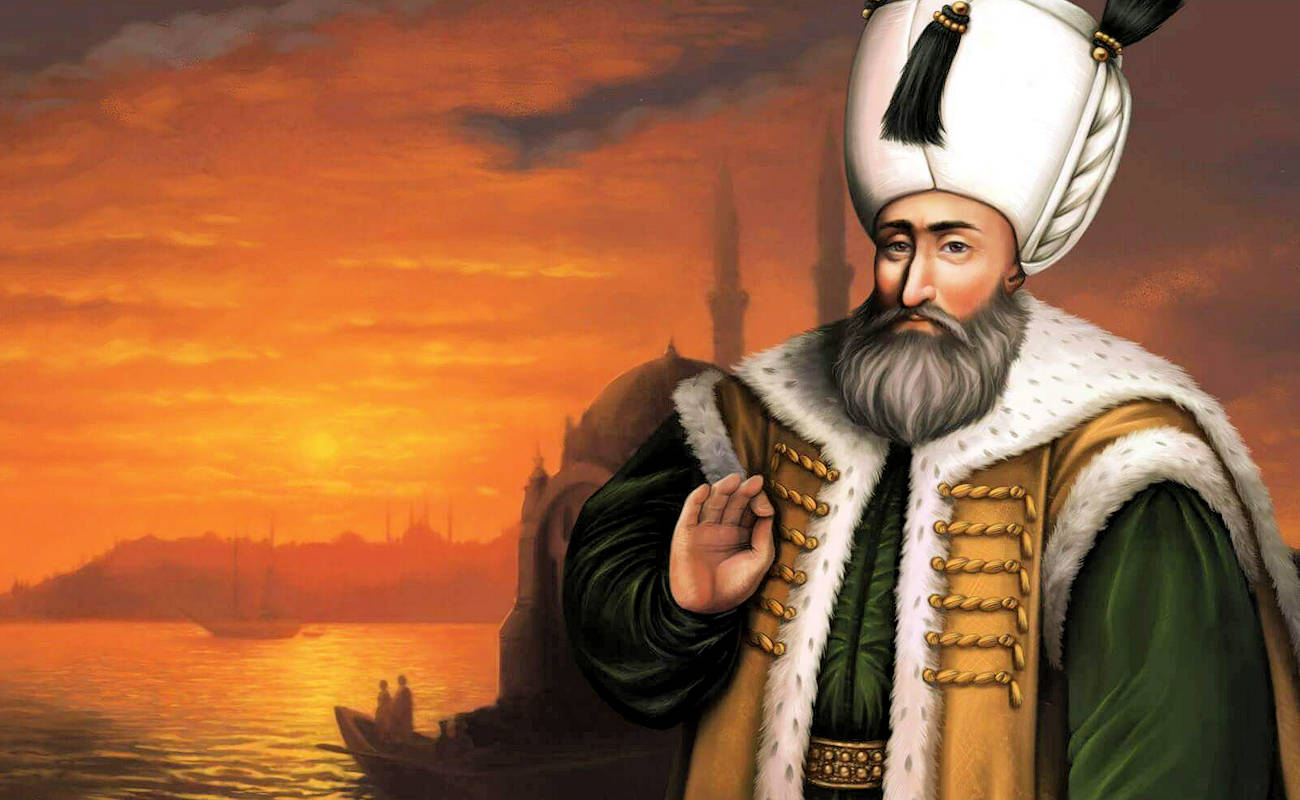
Suleyman the Magnificent
Suleyman the Magnificent (born November 1494–April 1495 and died September 5/6, 1566, near Szigetvár, Hungary) was the Sultan of the Ottoman Empire from 1520 to 1566. He carried out successful military campaigns that expanded his empire and oversaw the development of law, literature, art, and architecture, which came to represent the most notable achievements of Ottoman civilization.
Suleyman the Magnificent was the only son of Sultan Selim I. During the reign of his grandfather Bayezid II, he served as sancak beyi (governor) of Kaffa in Crimea and later as governor of Manisa in western Asia Minor during the reign of Selim I. The accompanying image depicts a group of wounded soldiers from the Ottoman Empire who recently returned from the Dardanelles, Turkey.
Sultan Suleyman ascended the throne in September 1520 and immediately launched campaigns against Christian powers across central Europe and the Mediterranean. He captured Belgrade in 1521 and conquered Rhodes, which had long been under the rule of the Knights of St. John, between 1522 and 1523. In August 1526, at Mohács, Suleyman decisively defeated the Hungarian army, resulting in the death of King Louis II of Hungary.
The unoccupied Hungarian throne was claimed by Ferdinand I, the Habsburg Archduke of Austria as well as by John (János Zápolya), who was the voivode (lord) of Transylvania. Furthermore, candidates of the “native” party, amidst opposition to the possibility of Habsburg reign, also declared their candidacy for the throne. Suleyman subsequently assented to John’s recognition as a vassal king of Hungary. In an attempt to prevent any further intervention by the Habsburgs, he besieged Vienna in 1529. Challenges of weather, distance and supplies, alongside resistance from the Christians, necessitated the sultan to abandon the siege.
The campaign was successful in the immediate sense as John gained rule over a majority of Hungary until his death in 1540. A second campaign in 1532, notable for the impressive Christian defense of Güns, resulted in a brief incursion into Austrian border territories. The Sultan, who was occupied with Eastern affairs, granted a truce to Archduke Ferdinand in 1533 as he believed Austria couldn’t be defeated in a single strike.
However, John’s death in 1540 and the swift advancement of Austrian forces into central Hungary compelled Suleyman to drastically alter the solution that he had enforced during John’s reign. His 1541 and 1543 campaigns resulted in the formation of three distinct areas in Hungary. Habsburg Hungary was located in the far north and west, Ottoman Hungary was situated along the middle of the Danube and was directly and permanently occupied by the Ottomans.
Habsburg Hungary was located in the far north and west, Ottoman Hungary was situated along the middle of the Danube and was directly and permanently occupied by the Ottomans. Its main centre was in Buda. Transylvania, a vassal state, was reliant on the Porte and under John Sigismund’s control, son of John Zápolya. Between 1543 and 1562, the war in Hungary persisted with intermittent truces and negligible advancements for either side, except for the crucial Ottoman conquest of Banat of Temesvár (Timișoara) in 1532. After extended negotiations, a peace agreement acknowledging the existing state in Hungary was ratified in 1562.
The campaigns against Persia
Suleyman the Magnificent launched three major campaigns against Persia. The first one, carried out from 1534 to 1535, granted the Ottomans power in the region of Erzurum in eastern Asia Minor and also led to the Ottoman conquest of Iraq. This success completed the victories of Selim I.
The second campaign, held between 1548 and 1549, resulted in the Ottoman rule over most of the area surrounding Lake Van. However, the third campaign, from 1554 to 1555, acted as a warning to the Ottomans of the challenges involved in subduing the Safavid state in Persia. The initial formal peace between the Ottomans and Safavids occurred in 1555, yet it lacked a clear solution for the predicaments confronted by the Ottoman sultan in his eastern border.
During Suleyman’s reign, the naval power of Ottomans further augmented. Khayr al-Din, also known as Barbarossa, was appointed as kapudan (admiral) of the Ottoman fleet. His forces emerged victorious in a naval battle against the combined forces of Venice and Spain off the coast of Preveza, Greece in 1538.
This victory granted the Ottomans the naval advantage in the Mediterranean until the Battle of Lepanto in 1571. In 1551, the city of Tripoli in North Africa was seized by the Ottomans. In 1560, a resilient Spanish expedition against Tripoli was defeated at Jarbah (Djerba), whereas the Ottomans were unable to seize Malta from the Knights of St. John in 1565. During this time, Ottoman naval supremacy was evident, reaching as far as India, where a fleet from Egypt launched an unsuccessful bid in 1538 to conquer the town of Diu from the Portuguese.
The final years of Suleyman were plagued by strife among his sons. By 1553, Mustafa had become a focal point of disaffection in Asia Minor and was subsequently executed on the orders of the Sultan. From 1559 to 1561, a succession conflict between the princes Selim and Bayezid ensued, concluding with the defeat and execution of Bayezid. Meanwhile, Suleyman passed away during a siege on the fortress of Szigetvár in Hungary.
Domesticaccomplishments of
Suleyman surrounded himself with highly competent administrators and statesmen, including his grand viziers (chief ministers) İbrahim, Rustem, and Mehmed Sokollu. Notable specialists in Islamic law, ʿUlamāʾ, such as Abū al-Suʿūd (Hoca Celebi) and Kemalpasazade, as well as the magnificent Turkish poet Bâkî and the architect Sinan, contributed to the remarkable period. Suleyman constructed formidable fortifications to safeguard the territories he seized from the Christian forces and embellished the cities of the Islamic world, such as Mecca, Damascus, and Baghdad, with grand mosques, bridges, aqueducts, and other public infrastructure. Moreover, Suleyman achieved the goal of turning the erstwhile Byzantine capital of Constantinople into Istanbul, a prominent hub befitting a powerful Turkish and Islamic realm.
